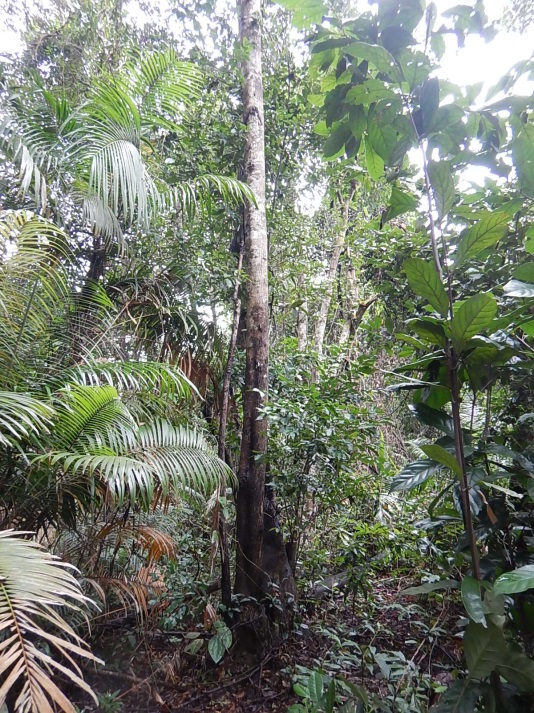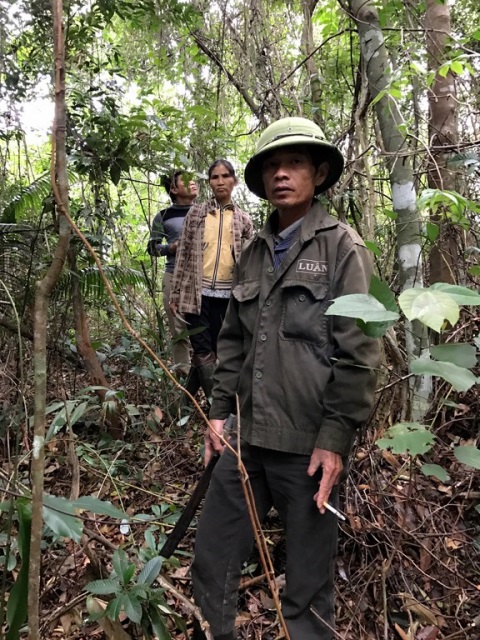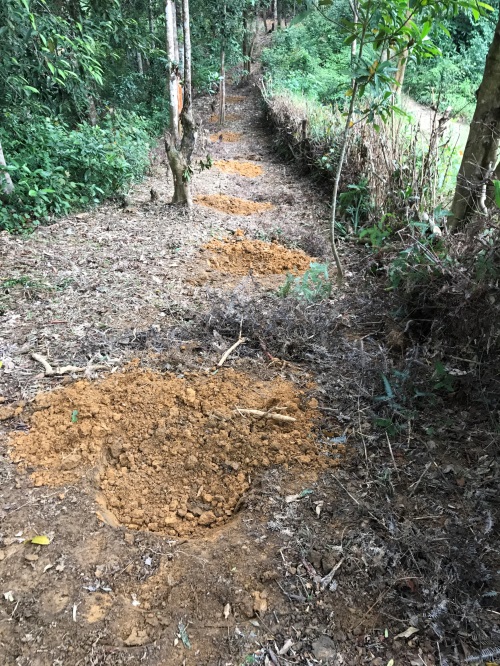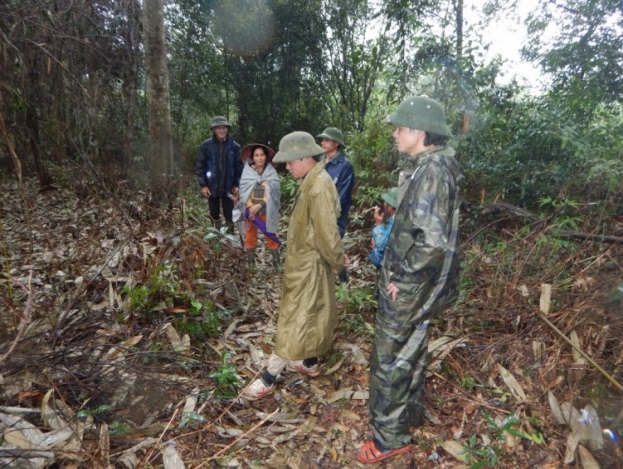




Planting started in 2016 December for:
i) protecting and enriching the existing natural forests in very low density and poor composition,
ii) introducing comparative advantages of natural forests against acacia plantation,
iii) raising awareness to local residents on utilizing ecosystems suitability.
Forests were protected and enriched to provide different services to other ecosystems and human, such as food and non-timber forest products for daily use and income, regulation of micro climate, underground water, and extreme weather conditions.
54 households whose forests are connected to each other joined the activities. They were then trained on enrichment, including on-hand practical exercises in their forests. Forests were enriched by strips and spots; depended on the current forest status that was checked by technicians. Three native species were planted, including Erythrophloeum fordii (Iron wood), Cinnamomum iner (Cinnamon tree species from SE Asia), and Manglietia glauca (Magnolia tree). These species were planted by single rows along contours. The survival rate was 95% and all trees had new growing points after 2 months. Plantings are taken care and checked by farmers.
- Various aspects made this planting possible. Farmers understood the importance of keeping natural forests for their own lives. This lead to their commitment and hard work in their forests.
- Also, the planting is compliant with the district and commune development plans on the enrichment of natural forests by native species.
- Lastly, their work was closely monitored and supported by technicians to ensure the planting was done correctly and to motivate them for the hard work.
- A large group of farmers is interested in clearing their forests to plant fast-growing species for short rotations.
- In addition, governments lure investment in industrial work including construction and processing factories that need raw materials from fast-growing species. These trends support farmers who easily decide to convert natural forests to short-rotation plantations for their daily lives and income.
- Besides raising awareness among farmers about the benefits that natural forests bring about, the project team worked closely with local authorities to ensure that the protection and restoration of natural forests was implemented effectively.
- Another important point was involving farmers who are passionate about natural forests and act as 'role models' to other families.
- Lastly, the process was transparent and farmers had their voiced in the entire process.